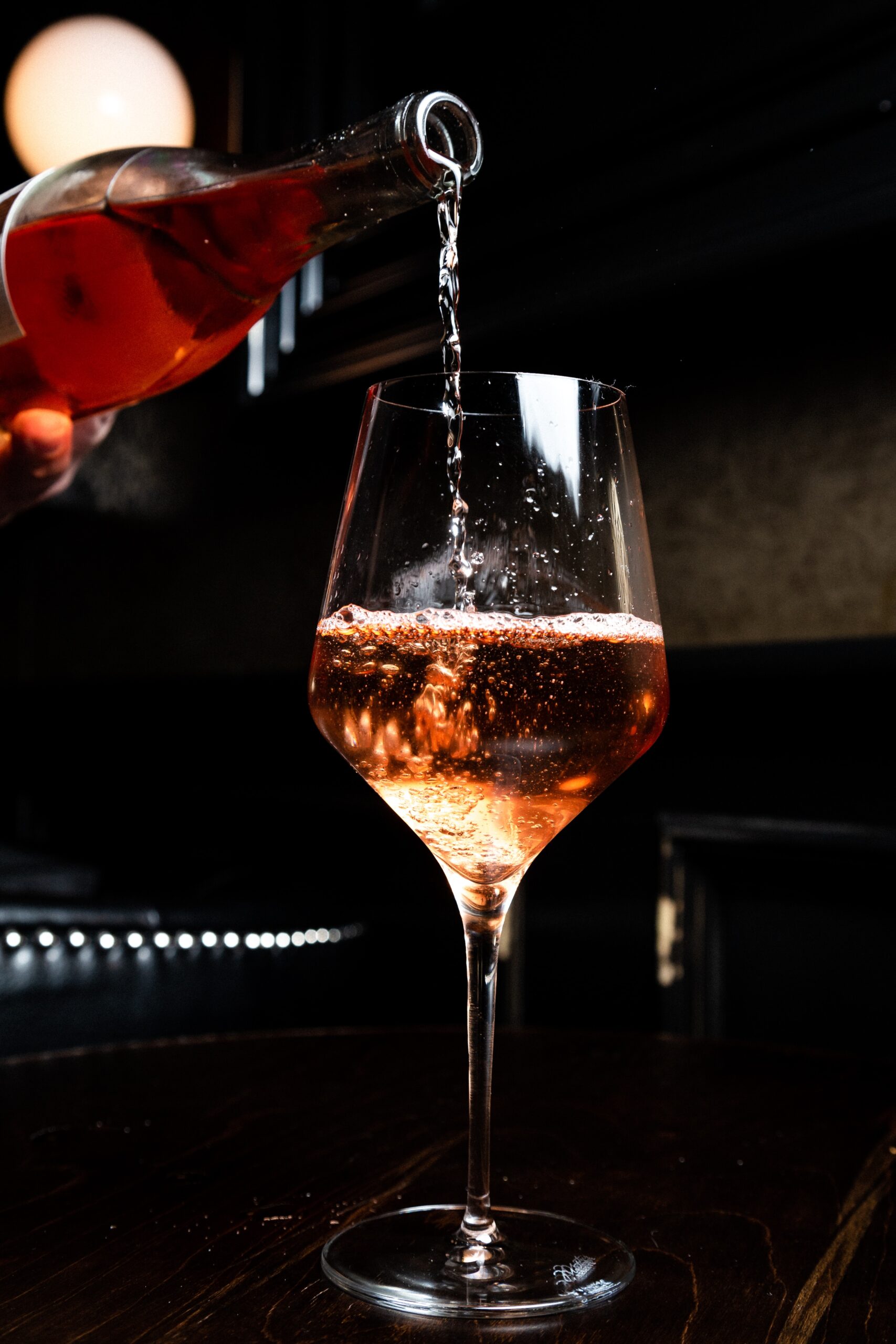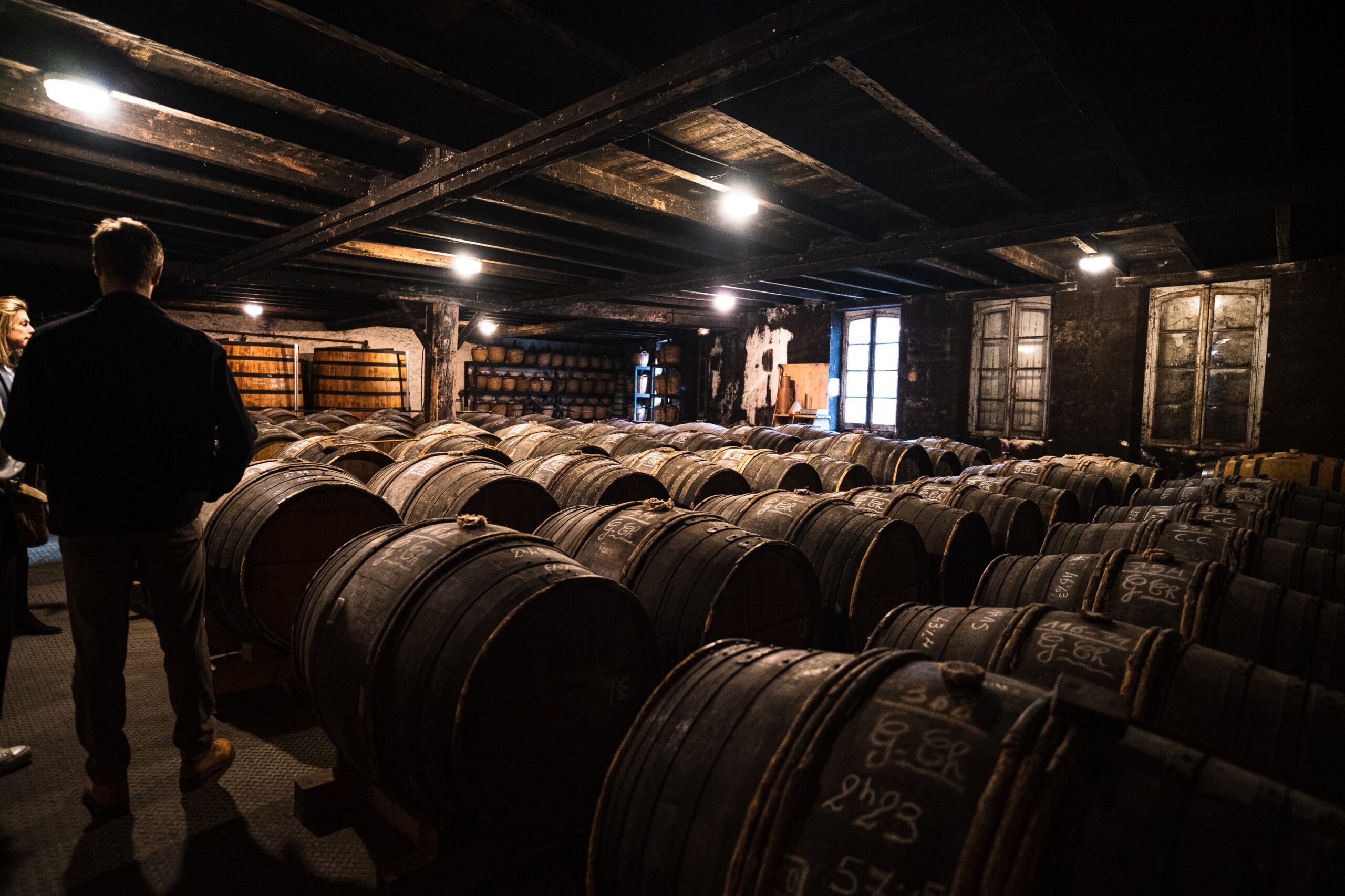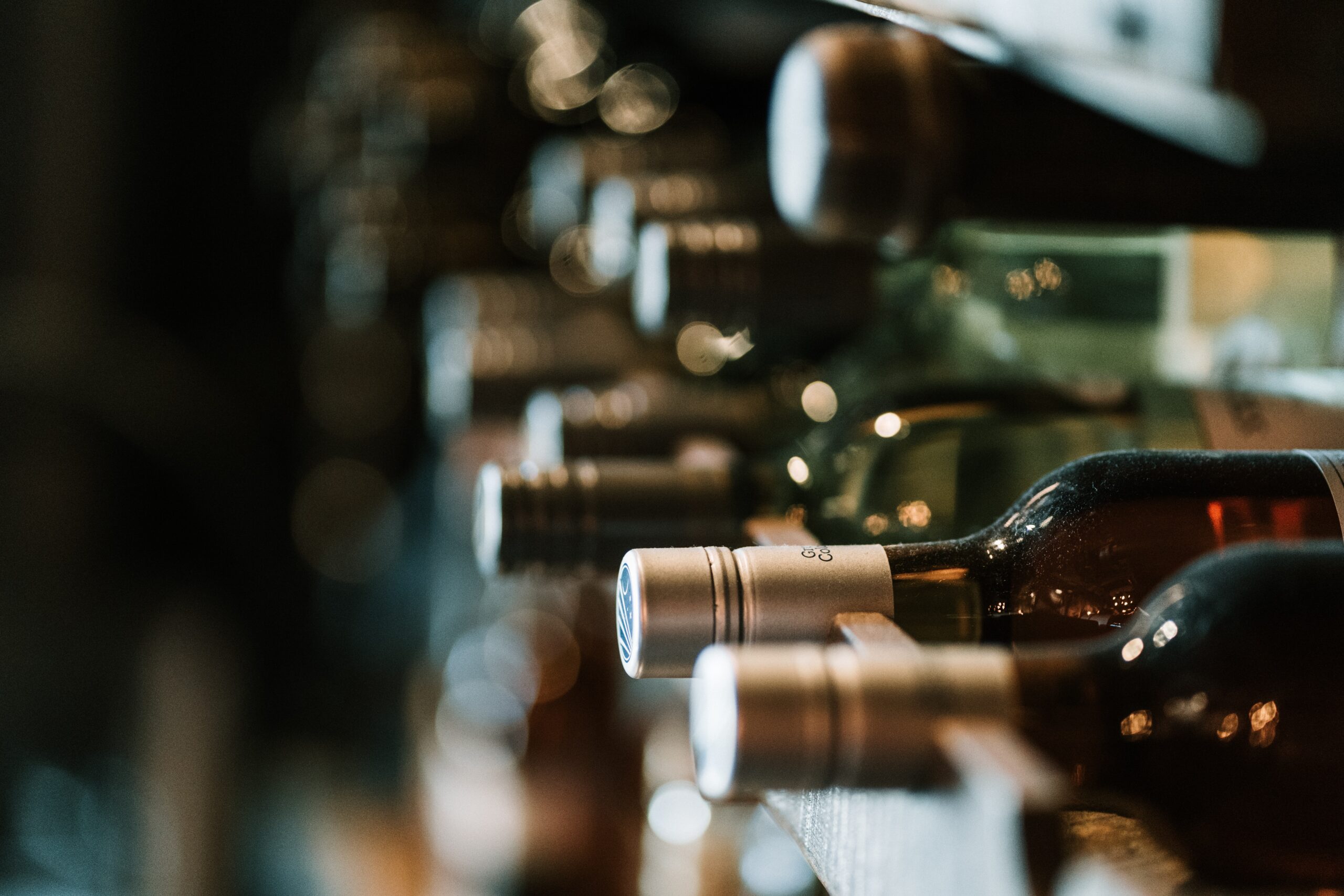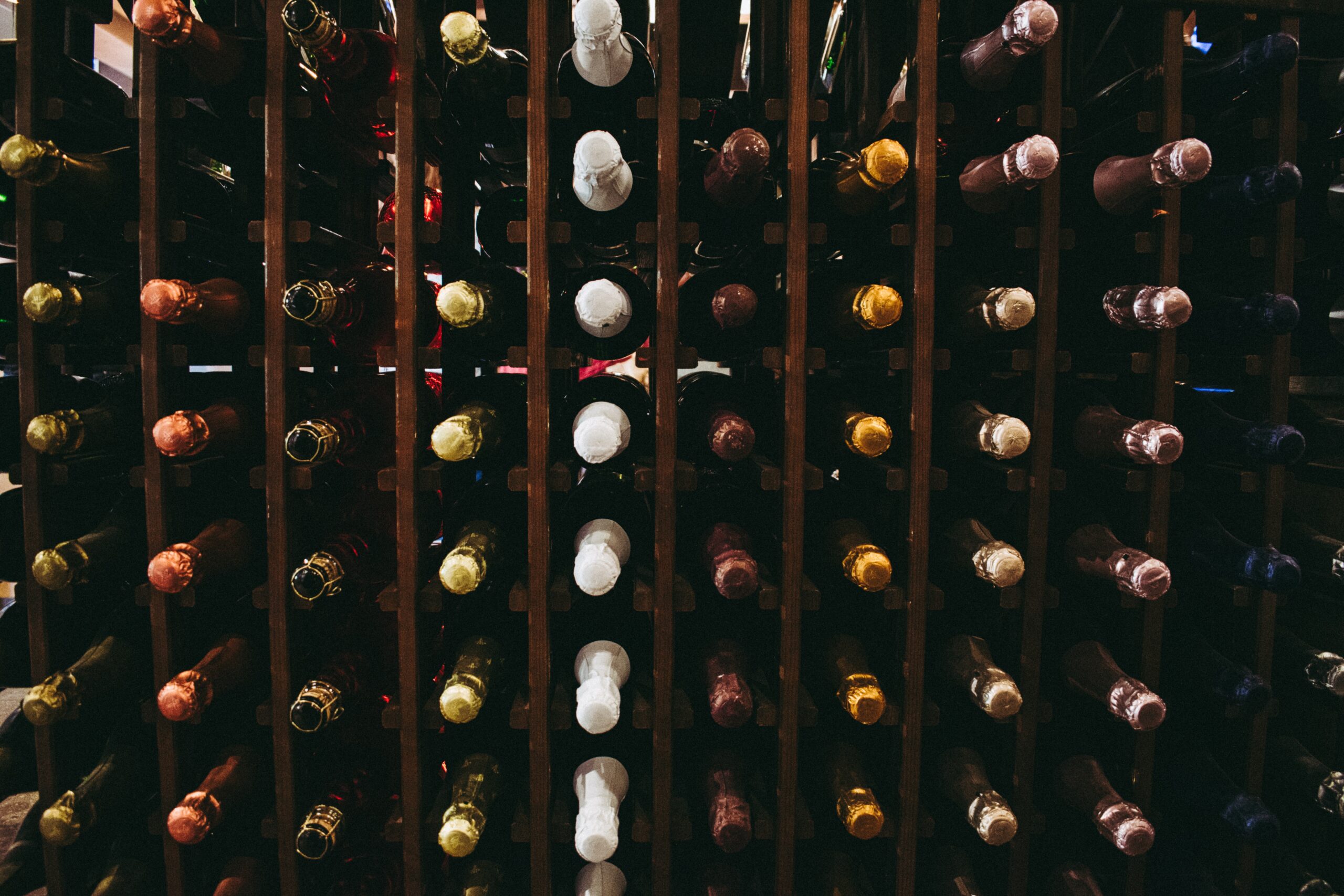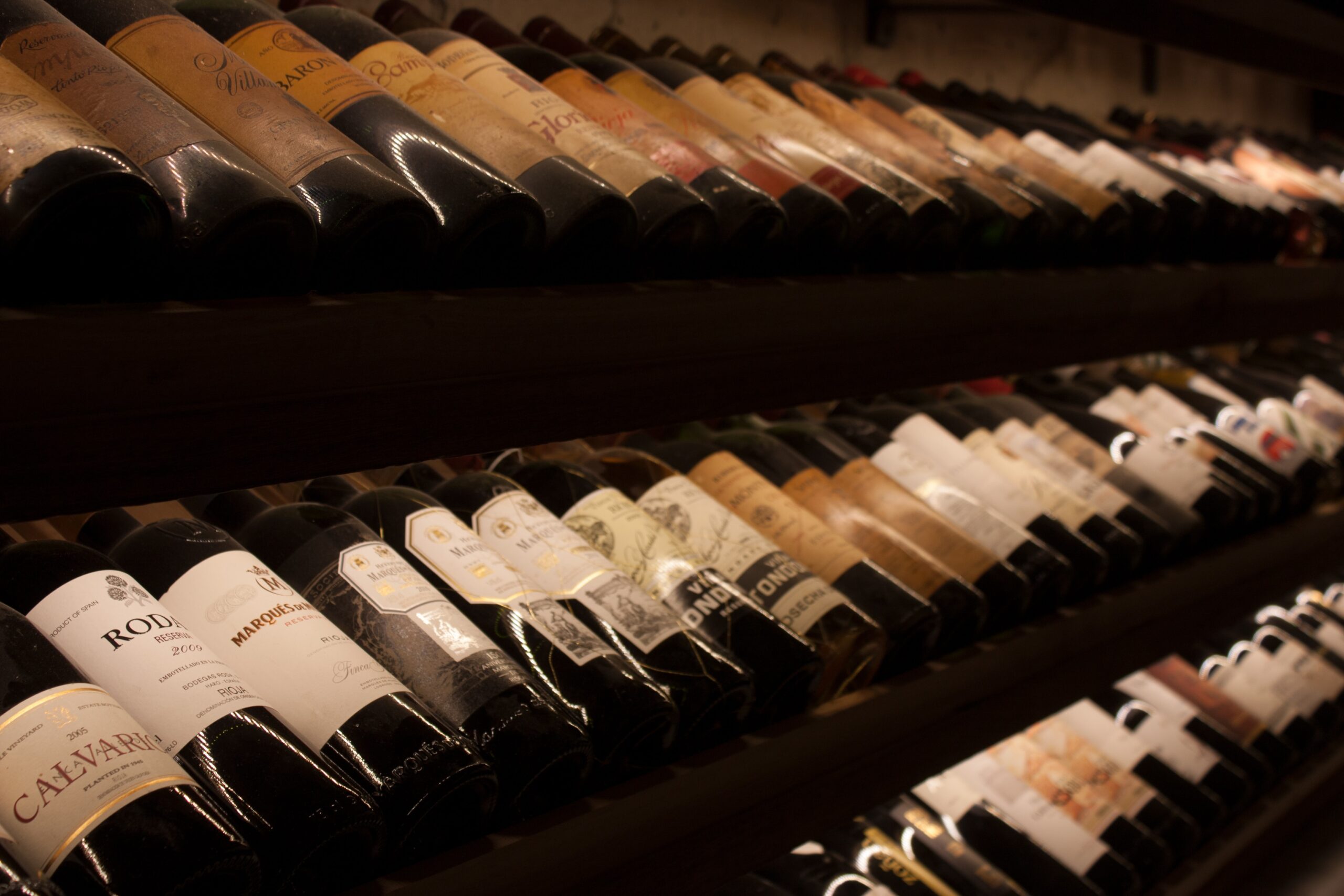Introduction
In the world of wine, there exists a timeless allure that beckons enthusiasts to venture beyond the uncorking and pouring of a bottle.
It’s a captivating journey that transcends the realm of a mere libation, a voyage into the intricate art of wine collecting and cellaring. From the dusty cellars of ancient châteaux to the modern wine cabinets nestled in contemporary homes, this article invites you to embark on a voyage where grapes metamorphose into liquid poetry, where patience and precision elevate a simple beverage into a cherished treasure, and where each bottle tells a story of terroir, craftsmanship, and time itself. Welcome to the captivating world of wine collecting and cellaring, where every bottle is an adventure waiting to unfold.
Wine collecting and cellaring is a passion and pursuit that transcends the realm of mere consumption. It’s a journey into the rich tapestry of flavors, histories, and cultures encapsulated in each bottle.
Whether you’re an aspiring oenophile or a seasoned connoisseur, this article will delve into the fascinating world of wine collecting and cellaring, guiding you through the intricacies of building, maintaining, and enjoying a treasured wine collection.
The Motivation Behind Wine Collecting and Cellaring
Wine collecting is a hobby and passion that involves acquiring and storing bottles of wine with the intention of enjoying them in the future. Wine collectors, often called “oenophiles,” appreciate wine for its complexity, flavor, and ability to age and improve over time.
People embark on the wine collecting journey for various reasons, and understanding your motivation can shape your approach:
Personal Enjoyment
Wine collecting and cellaring, at its core, is a deeply personal journey of pleasure and passion. It’s a pursuit where the love of wine goes beyond the occasional sip, transcending into a realm where every bottle becomes a chapter in a personal story, each cork a portal to cherished memories.
For those who collect for personal enjoyment, wine is more than a beverage; it’s an art form, a snapshot of a specific place and time. It’s about the anticipation that builds as you carefully select each bottle, the excitement that courses through you when you uncork a long-awaited gem, and the profound satisfaction that washes over you as you savor its nuanced flavors.
The beauty of wine collecting lies in its ability to capture moments in liquid form. It’s about celebrating milestones, commemorating anniversaries, and sharing special moments with loved ones. Each bottle is a time capsule, a testament to the joys, sorrows, and triumphs of life.
Wine collecting is also a journey of discovery. It’s an exploration of diverse terroirs, grape varieties, and winemaking styles. It’s about expanding your palate, deepening your understanding of wine, and uncovering hidden gems that delight your senses.
In the quiet sanctuary of a wine cellar or the elegance of a well-appointed wine cabinet, collectors find solace and reflection. It’s a space where the stresses of the day fade into the background, replaced by the symphony of aromas and flavors that dance from glass to palate.
Ultimately, wine collecting and cellaring for personal enjoyment is about creating a sanctuary of taste, a retreat where the complexities of life are distilled into the simple pleasure of a well-aged wine. It’s a journey of the senses, a celebration of life’s finer moments, and a tribute to the beauty of patience and time.
Investment
Wine can be a sound investment, with certain bottles appreciating significantly in value over time. For some collectors, this represents an attractive opportunity.
Investing in wine collecting and cellaring can be an intriguing endeavor, combining the pleasures of wine appreciation with the potential for financial gain. While wine can indeed be a profitable investment, it’s essential to approach it with a clear strategy and understanding of the market. Here are key considerations when investing in wine collecting and cellaring:
- Diversification
Just as with traditional investments, diversification is crucial. Invest in a range of wines from different regions, grape varieties, and producers. This minimizes risks associated with the wine market’s volatility.
- Education
Knowledge is your best ally. Educate yourself about wine regions, winemaking techniques, vintages, and which wines have a history of appreciating in value. Wine education enhances your ability to make informed decisions.
- Budget and Risk Tolerance
Determine your investment budget and risk tolerance. Wine can be a long-term investment, and it’s important to be prepared for the possibility that some bottles may not appreciate as expected.
- Storage and Provenance
Proper storage is essential. To preserve the perfect conditions for aging, make an investment in proper storage facilities or wine refrigerators. Ensure the provenance of your wines is well-documented, as wines with impeccable history command higher prices.
- Wine Ratings and Reviews
Pay attention to wine ratings and reviews from reputable sources and critics. High scores can significantly impact a wine’s market value.
- Long-Term Horizon
Wine investments often require a long-term horizon. It may take several years for a wine to appreciate significantly. Patience is key.
- Market Trends
Stay informed about market trends and the performance of specific wine regions or types. The wine market can be influenced by factors such as economic conditions, vintage quality, and changing consumer preferences.
- Liquidity and Selling Strategy
Understand that wine is not a highly liquid asset. Selling wine can take time and may involve brokerage fees or auction costs. Develop a selling strategy and be prepared for potential holding periods.
- Authentication
For valuable bottles, consider professional authentication services to verify authenticity and provenance. Authenticity is crucial for maintaining the wine’s value.
- Legal and Tax Considerations
Be aware of legal and tax regulations related to buying, selling, and storing wine in your region. Wine investments may have tax implications, and it’s important to comply with relevant laws.
- Risk Mitigation
Consider wine investment funds or portfolios managed by experts if you prefer a more diversified and professionally managed approach to wine investment.
It’s important to remember that wine collecting and cellaring can be both an enjoyable hobby and a potentially profitable investment. However, the wine market can be unpredictable, and not all bottles appreciate in value. Therefore, it’s advisable to approach wine investment with a balanced perspective, combining your passion for wine with a prudent financial strategy.
Status and Prestige
Status and prestige play significant roles in the world of wine collecting and cellaring, adding a layer of allure and sophistication to this already captivating hobby. For many collectors, wine represents more than just a beverage; it embodies a symbol of social standing, connoisseurship, and exclusivity. Here’s how status and prestige factor into wine collecting and cellaring:
- Symbol of Achievement
For some collectors, an extensive and well-curated wine collection is a testament to their success and affluence. Owning rare and valuable bottles can signify achievement and success in life.
- Social Significance
Wine has a long history of being associated with social gatherings, celebrations, and special occasions. Collectors often use their wine collections to host memorable events and enhance their social lives. Sharing a prized bottle with friends and guests can be a source of great pride and a way to cement one’s reputation as a gracious host.
- Gifting and Generosity
The act of gifting a rare or prestigious wine is a demonstration of generosity and thoughtfulness. It can strengthen personal and professional relationships and convey a sense of prestige.
- Wine Clubs and Exclusivity
Some wine collectors join exclusive wine clubs or societies, which offer access to limited-production, prestigious wines that are not readily available to the general public. Membership in these clubs can enhance one’s prestige within the wine community.
- Collectible Labels and Producers
Collectors often seek out wines from renowned producers or iconic vineyards, as owning bottles from these esteemed sources can enhance one’s status within the wine world.
- Wine Auctions and Rare Bottles
Participating in wine auctions and acquiring rare, aged, or large-format bottles can be a way to elevate one’s collection and prestige. Collectors who possess highly sought-after vintages or labels may gain recognition and respect from peers.
- Wine Education and Tasting
Investing in wine education and developing a discerning palate can contribute to one’s prestige as a wine enthusiast. Knowing how to appreciate and discuss wine with knowledge and sophistication can garner respect among fellow collectors and wine professionals.
- Cellar Design and Presentation
The design and presentation of a wine cellar can also contribute to prestige. A well-designed, temperature-controlled cellar stocked with prized bottles can be a showpiece in a collector’s home, impressing guests and visitors.
While status and prestige undoubtedly play roles in wine collecting and cellaring, it’s important to remember that the true essence of this hobby lies in the appreciation of wine itself. Collectors may begin their journey with aspirations of status, but over time, many find that the most rewarding aspect is the deepening connection to the art, culture, and history of wine. Whether driven by status or passion, wine collecting and cellaring offer a rich and multifaceted experience that continues to captivate enthusiasts around the world.
Building Your Wine Collection
Building a wine collection is an exciting and rewarding endeavor that allows you to explore the world of wine, from its diverse regions and grape varieties to its rich history and culture. Whether you’re a novice enthusiast or a seasoned collector, here are steps to help you build your wine collection:
1. Define Your Goals and Preferences
Determine your objectives for wine collecting. Are you collecting for personal enjoyment, investment, or both? Knowing your goals will guide your choices.
2. Educate Yourself
Invest time in wine education. Learn about wine regions, grape varieties, winemaking techniques, and wine history. Books, courses, and wine tastings are valuable resources.
3. Set a Budget
Establish a budget for your wine collection. Wine collecting can be as affordable or as extravagant as you choose, but it’s essential to define your financial boundaries.
4. Start Small and Diversify
Begin by collecting a variety of wines from different regions and grape types. This diversity will enhance your tasting experiences and minimize risk.
5. Wine Selection
Choose wines with aging potential. Reds like Bordeaux, Burgundy, and Cabernet Sauvignon often age well, as do some high-quality whites like Chardonnay and Riesling. There are also a few people that like to collect the lesser known wines like the Vranec wine. To know more about this grape variety, you can read our article titled Learn More About Vranec, A Grape Variety from The Balkans.
6. Utilize Wine Ratings and Reviews
Consult reputable wine critics and publications for ratings and reviews. Experts like Robert Parker, Wine Spectator, and Jancis Robinson can offer valuable insights.
7. Build Relationships
Establish relationships with local wine shops, wineries, and fellow collectors. Building connections in the wine community can lead to valuable recommendations and opportunities.
8. Storage and Cellaring
Invest in proper storage, such as a wine cellar, wine fridge, or wine storage facility. Maintain ideal conditions for temperature, humidity, and darkness to preserve your wines.
9. Label and Inventory
Clearly label your bottles with vintage, producer, and varietal information. Keep a detailed inventory to track your collection and its value.
10. Patience and Aging
Understand that not all wines are meant for long-term aging. Some are best enjoyed young, while others benefit from extended cellaring. Develop patience and allow your collection to mature.
11. Explore Different Sources
Look beyond local wine shops. Explore online retailers, auctions, and wine clubs to find unique and rare bottles.
12. Wine Communities
Join wine clubs, forums, or local tasting groups to connect with fellow enthusiasts. Sharing experiences and knowledge can enhance your collecting journey.
13. Travel and Visits
If possible, visit wine regions and wineries to deepen your understanding and appreciation of wine. Many collectors find these experiences enriching.
14. Regular Tasting
Continuously taste your wines to track their development and to identify when they are at their peak for consumption.
15. Seek Expert Advice
Consider consulting with wine professionals or collectors who have more experience. They can provide guidance on building a balanced collection.
Remember that wine collecting is a personal journey, and there’s no one-size-fits-all approach. Your collection should reflect your tastes, preferences, and objectives. As you accumulate bottles and knowledge over time, your wine collection will become a source of enjoyment, pride, and discovery.
Knowledge is Key. Start by building your wine knowledge. Familiarize yourself with wine regions, grape varieties, and reputable producers. Education is a fundamental pillar of wine collecting.
Budget. Determine your budget. Wine collecting can be tailored to various financial levels. It’s essential to set limits and be disciplined in your acquisitions.
Diversity. A well-rounded collection includes wines from different regions, grape varieties, and vintages. Diversity enhances your tasting experiences and minimizes risk in case certain wines don’t age as expected.
Cellar-Worthy Wines. Pick wines that will age well. Reds like Bordeaux, Burgundy, and Cabernet Sauvignon often age well, but some whites, like Chardonnay, can also be cellared successfully.
Using Wine Ratings. Wine ratings and reviews from trusted sources can guide your purchases. Experts such as Robert Parker, Wine Spectator, and Jancis Robinson can provide valuable insights.
Enjoying Your Wine Collection
Wine collecting is not just about acquisition and storage. It also involves taking pleasure in the results of your labor. Here are some tips for enjoying your collection:
Opening Bottles: Plan special occasions or gatherings to enjoy the wines in your collection. Remember to decant and allow the wine to breathe before serving.
Pairing with Food: Explore food and wine pairings to enhance your tasting experiences.
Sharing: Share your collection with friends, family, and fellow wine enthusiasts to create memorable moments and discussions.
Wine collecting is a rewarding and often lifelong journey that requires patience, ongoing learning, and a deep appreciation for the art and science of winemaking. It’s not only a hobby but also a cultural and historical exploration through the lens of wine.
In addition to collecting wine, some people also enjoy collecting beer. Find out more about it in our article about beer trading and collecting.
Wine Collecting Etiquette
Wine collecting etiquette is a set of practices and behaviors that wine enthusiasts should follow to ensure the proper care of their wine collections and to uphold the traditions and standards of the wine community. These guidelines promote respect for the wine, fellow collectors, and the broader wine culture. Here are some key aspects of wine collecting etiquette:
Handle Bottles with Care
Always handle wine bottles gently and with respect. Avoid shaking or disturbing the sediment in older wines.
Proper Storage
Invest in suitable storage conditions to ensure that your wines are stored at the right temperature, humidity, and darkness. Proper storage helps maintain wine quality.
Bottle Orientation
Store wine bottles horizontally if they have natural corks. This keeps the cork moist and prevents it from drying out, which could lead to premature aging or spoilage.
Labeling
Clearly label your bottles with essential information, such as the vintage, producer, and varietal. This makes it easier to identify wines without disturbing them.
Inventory Management
Keep a detailed inventory of your wine collection. Include information about purchase dates, drinking windows, and tasting notes. This helps you track the contents and value of your cellar.
Proper Glassware
Use appropriate wine glasses designed for specific wine types to maximize the tasting experience.
Sharing
Be open to sharing your wine collection with friends, family, and fellow enthusiasts on appropriate occasions. Wine is often best enjoyed in good company.
Wine Tasting
When tasting wine with others, be considerate and engage in thoughtful discussions about the wines. Avoid dominating the conversation or monopolizing the tasting.
Respect Others’ Collections
If visiting someone else’s wine cellar, be respectful of their collection. Ask for permission before handling bottles and follow any specific rules they may have.
Gifting
When gifting wine to others, consider the recipient’s preferences and occasions. Offer wines that align with their tastes and the context of the gift.
Resale and Trading
If you decide to sell or trade wines from your collection, be honest and transparent about the condition, provenance, and storage history of the bottles.
Wine Auctions
If participating in wine auctions, familiarize yourself with the rules and expectations of the auction house. Bidding should be conducted with respect for other participants.
Wine Events and Tastings
Attend wine events, tastings, and gatherings with an open mind and a willingness to learn. Respect the organizers’ guidelines and follow appropriate tasting etiquette.
Be Courteous
In all wine-related interactions, whether online or in person, maintain courteous and respectful communication. Engage in constructive and friendly discussions.
Responsible Consumption
When enjoying your wine collection, do so responsibly. Wine should be savored in moderation, and excessive consumption should be avoided.
Wine collecting etiquette is about fostering a sense of community and mutual respect among wine enthusiasts. It recognizes that wine is not just a beverage but a cultural and social experience to be shared and enjoyed with others who appreciate its nuances and complexities. By adhering to these guidelines, you contribute to the positive and enriching aspects of the wine collecting and tasting community.
The Art of Wine Storage
Wine cellaring, often referred to as wine storage or wine aging, is the practice of storing wine bottles in a controlled environment to allow them to mature and develop in flavor and complexity over time. Proper wine cellaring is essential for preserving the quality of wine and ensuring it reaches its full potential. Here’s what you need to know about wine cellaring:
1. Purpose of Wine Cellaring
Aging and Development: Wine cellaring is primarily done to allow wine to age gracefully. Many wines, especially high-quality reds and some whites, can improve in flavor and aroma as they interact with oxygen and go through chemical changes over time.
Reserve and Special Occasions: Cellared wines are often reserved for special occasions, celebrations, or to be shared with friends and family on significant milestones.
2. Key Factors in Wine Cellaring
To properly cellar wine, you need to control several key factors:
Temperature. Wine should be stored at a consistent temperature, around 55°F (13°C). Fluctuations can cause premature aging or spoilage.
Humidity. Maintain a relative humidity of about 70% to prevent corks from drying out and wine from oxidizing.
Darkness. Store your wine in a dark place, as UV light can harm the wine.
Stability. Minimize vibrations and disturbances to allow the wine to mature peacefully.
3. Ideal Conditions of Wine Aging
The ideal wine cellar or storage environment mimics the conditions of a traditional underground wine cave. If you’re setting up a wine cellar, aim for the following:
Temperature Control: Invest in a temperature-controlled wine cellar or wine fridge to maintain the ideal temperature. Avoid fluctuations above or below the recommended range.
Humidity Management: Use a humidifier or cellar humidification system to maintain the appropriate humidity level, especially in dry climates.
Dark and Still Environment: Ensure your cellar or storage area is kept dark and free from vibrations, such as those from household appliances or traffic.
Adequate Ventilation: Proper ventilation is essential to prevent mold and musty odors. Maintain good airflow while avoiding strong odors from entering the cellar.
4. Wine Cellaring Tips
Bottle Orientation. Store wine bottles horizontally to keep the cork moist and the seal intact, preventing air from entering.
Labeling. Label your bottles with vintage, producer, and varietal information for easy identification without disturbing the bottles.
Inventory Management. Keep a detailed inventory to track what you have, when to drink it, and its value.
Patience: Remember that not all wines are meant for long-term cellaring. While certain wines can improve from age, others are better enjoyed when they are still young. Research the aging potential of your wines.
5. Enjoying Cellared Wines
When the time comes to enjoy your cellared wines, keep these tips in mind:
Decanting: Some older wines may benefit from decanting to remove sediment and allow the wine to breathe, enhancing the aroma and flavor.
Temperature: Serve wine at the appropriate temperature, typically slightly below cellar temperature for reds and slightly above cellar temperature for whites.
Glassware: Use appropriate wine glasses designed for the specific wine type to enhance the tasting experience.
Wine cellaring is a patient and rewarding endeavor that allows wine enthusiasts to explore the nuances and complexities of wine as it evolves over time. It requires dedication, knowledge, and the right storage conditions to ensure that your wines age gracefully and provide memorable tasting experiences.
Wine Insurance
Consider wine insurance for valuable collections to protect against loss, damage, or theft.
Wine insurance is a specialized type of coverage designed to protect your valuable wine collection in case of damage, theft, or other unforeseen events. Wine collectors often invest significant time and resources in acquiring and cellaring their wines, making wine insurance an essential consideration to safeguard their investments. Here are some essential ideas to keep in mind regarding wine insurance:
1. What is Covered by Wine Insurance?
Wine insurance typically covers the following scenarios:
Physical Loss or Damage. This includes damage due to accidents, natural disasters (e.g., fire, flood, earthquake), and breakage during transportation or handling.
Theft. Protection against theft or unauthorized access to your wine collection.
Spoilage. Coverage for wine spoilage due to temperature fluctuations, humidity issues, or other environmental factors.
Power Outages. Coverage for wine damage resulting from power outages that disrupt temperature control systems.
Breakage. Reimbursement for bottles that break or leak during storage or handling.
Transit. Protection for wines while they are being transported or shipped.
2. Assessing the Value of Your Collection
Before purchasing wine insurance, it’s essential to have an accurate valuation of your wine collection. This includes documenting each bottle’s provenance, purchase price, current market value, and any supporting documentation (appraisals, receipts, etc.).
3. Storage and Cellar Conditions
Wine insurance providers may require you to adhere to specific storage conditions, such as temperature and humidity control, to maintain coverage. Make sure your storage facility meets these requirements.
4. Policy Limitations and Deductibles
Review the policy limits and deductibles carefully. Ensure that the coverage aligns with the total value of your collection and that you understand how deductibles work in the event of a claim.
5. Working with a Specialized Insurer
Consider working with an insurer specializing in wine insurance. They may have a better understanding of the unique needs and risks associated with wine collecting.
6. Policy Costs
The cost of wine insurance can vary based on factors such as the total value of your collection, storage conditions, location, and coverage limits. It’s advisable to obtain quotes from multiple insurers to compare rates and coverage options.
7. Periodic Appraisals
Periodic appraisals of your wine collection can help ensure that your coverage remains up to date. As the value of your collection changes over time, it’s essential to adjust your insurance accordingly.
8. Review the Policy Terms
Carefully review the terms and conditions of the policy, including any exclusions or limitations. Make sure you understand the circumstances under which a claim may be denied.
9. Documentation and Records
Keep detailed records of your wine collection, including photographs, receipts, appraisals, and any communication with your insurer. This documentation can be invaluable in the event of a claim.
10. Prompt Reporting
If an incident occurs that may result in a claim, such as theft or damage, report it to your insurance provider promptly to initiate the claims process.
Wine insurance is an important consideration for serious wine collectors, as it provides protection against unforeseen events that could result in significant financial losses. Before purchasing a policy, it’s advisable to compare options, review terms and conditions carefully, and consult with insurance professionals who can help tailor coverage to your specific needs.
Conclusion
Wine collecting and cellaring is a journey of exploration and appreciation. It’s a captivating blend of art and science, where patience and knowledge intertwine to create a collection that transcends time. Whether you collect for enjoyment, investment, or prestige, the key is to approach it with passion and respect for the centuries-old craft of winemaking. So, raise a glass to the world of wine collecting and cellaring, where every bottle tells a unique story waiting to be savored.

